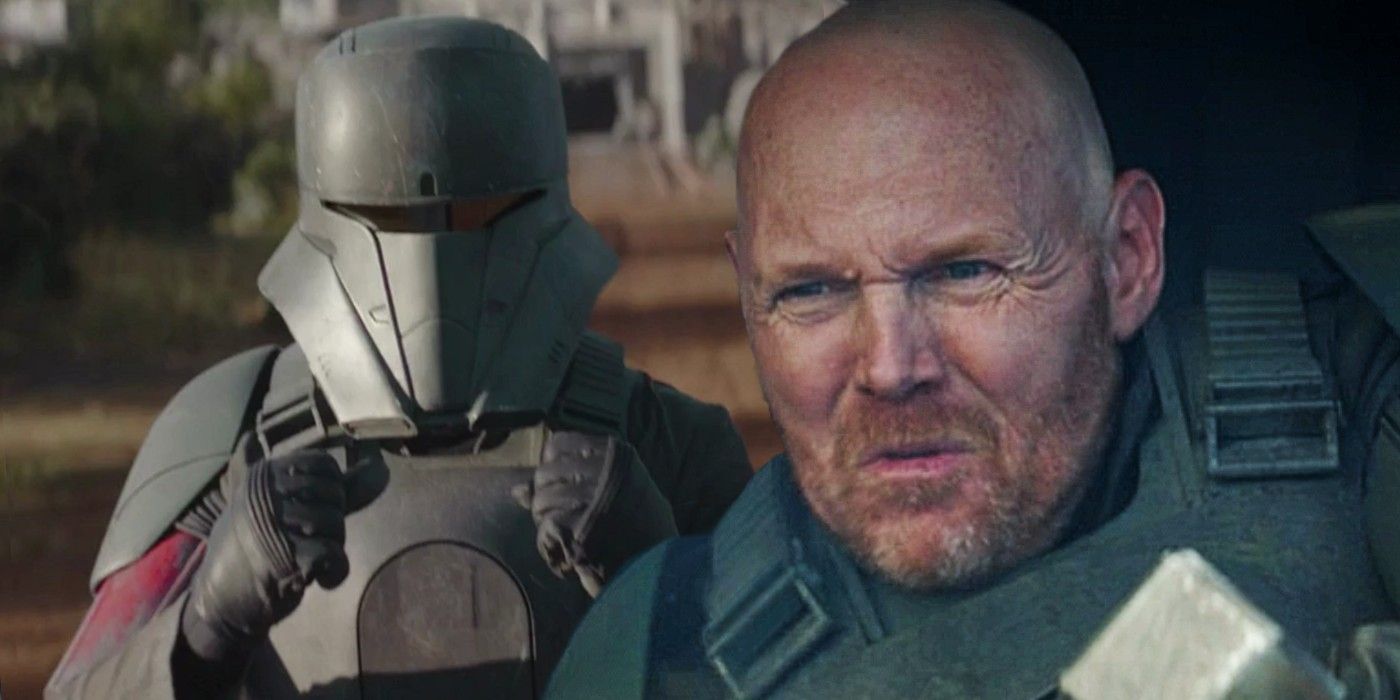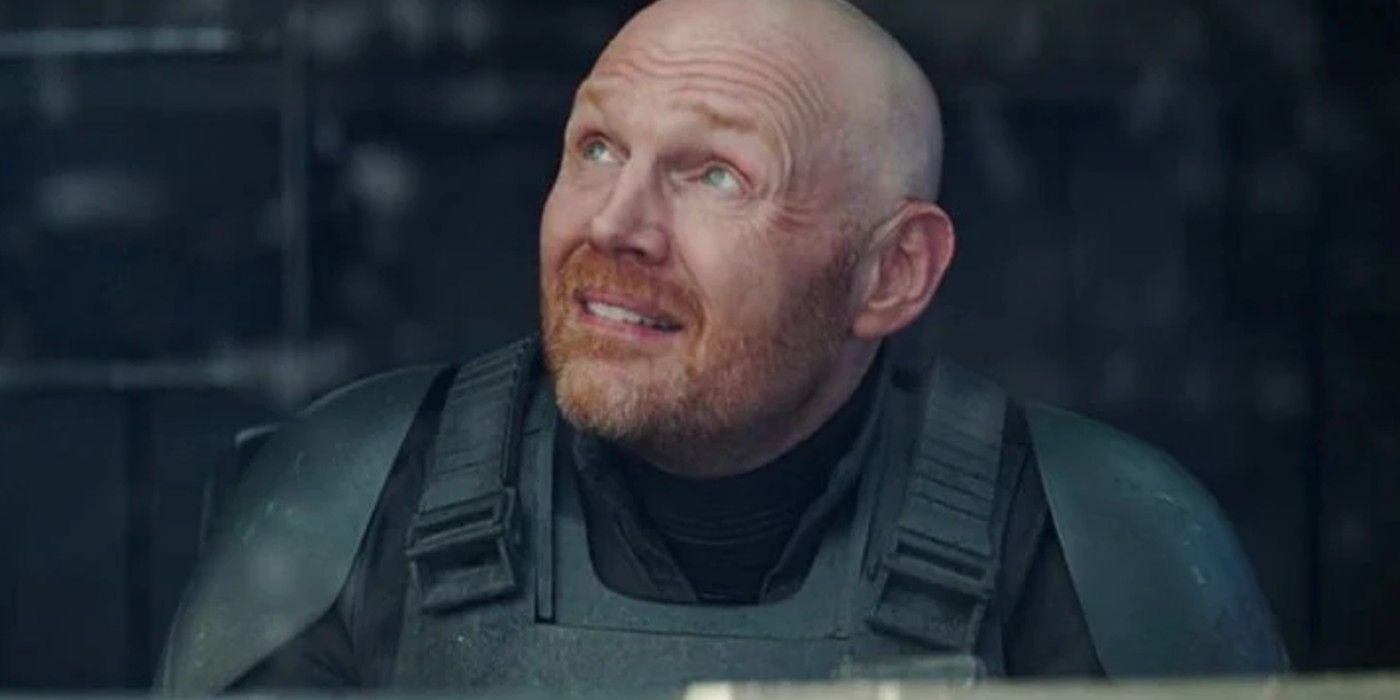The Mandalorian season 2 brought back Bill Burr's former Imperial sharpshooter, Mayfeld, and spoofed the old Star Wars trope of heroes stealing stormtrooper armor with a stink gag. Alongside the intelligent commentary on post-war occupation ideology and a strong Vietnam allegory in "The Believer", Mayfeld complaining that his borrowed Imperial armor was stinky wasn't the episode's most cerebral moment, but it actually posed some interesting questions.
"The Believer" saw The Mandalorian taking aim at the assumed irrefutable goodness of the New Republic, who Burr's acerbic character branded mere occupiers alongside the Empire in the eyes of remote planet natives. That observation paid off rather spectacularly when Mayfeld and Din Djarin disguised themselves as Imperial Juggernaut pilots (in new alternate stormtrooper armor) and were attacked by alien pirates. Even though they saw Imperial troopers, to those attackers, invaders are invaders, no matter what insignia they wear on their uniforms.
Mayfeld's dialogue often felt like it was directly channeling Bill Burr's stand-up comedy material - particularly in terms of the more overtly political elements - and the moment in which he refused to wear his transport crew helmet could easily fit with that. But actually, the armor stinking spoke not only to the nature of the troopers Mando and Mayfeld stole from, but also the difference in various stormtrooper armor variants. Nothing in Star Wars means nothing and an unpleasant odor is no different.
Standard issue stormtrooper armor may be unsuited to protecting the wearer, despite specific details incorporated to help do just that, but it is a complex structure. Constructed of not only the plastoid outer layer and an inner body glove, stormtrooper armor in peak condition is designed to be durable in and out of combat, capable of withstanding extreme conditions and weather. Crucially for the purposes of this examination, it's also heavily ventilated and heat regulated, and Legends at least established that clone troopers cleaned their own armor, even though personal ownership was strictly forbidden. In other words, the idea of armor that smelled bad doesn't fit with lore, either canon or Legends. But there are two exceptional considerations here that need to be explored.
First, the armor Mayfeld is wearing is not standard stormtrooper armor, it is a simplified and greyish green variant of the type worn by Imperial combat assault tank pilots first introduced in Rogue One. Even without the obvious simplifications on those tank crew uniforms, transport pilots were already very different from combat stormtroopers, because the majority of their protection came from their vehicles. Their armor was thus lighter weight and less complex, no doubt including the inner layers, which at least suggests less ventilation, less complex environmental controls, and more capacity for stinking. Add to that the very real chance that the previous owner of Mayfeld's armor was simply not as committed to personal hygiene considering his mission carried a particularly high possibility of being blown up and it's a simple logical jump. Mayfeld tellingly says his gloves are still wet, suggesting profuse sweating, and the fact he makes such an observation on smell suggests it's not typical of the armor - and as an Imperial deserter, he'd know.
But then there's the fact that this is no longer the Empire in full bloom. The troopers Mayfeld and Mando take down are part of an Imperial remnant, cobbled together of what is left and perched precariously on the very knife-edge of a huge change in the Empire. They are not yet the First Order and nor are their fellow troopers in the ascendancy; in fact, the remnant is a collection of different stormtrooper variants, some of whom are removed from their specific duties (like the coastal troopers seen protecting the juggernaut). The idea of this ragtag group being elite is clearly not a consideration and their very make-up suggests they have survived other missions and been bolted together to make a new company out of necessity. Given that implied backstory, the idea of armor that wasn't necessarily in peak condition is far from illogical and is in fact yet another example of why The Mandalorian is so great at small details that add up to larger observations.


